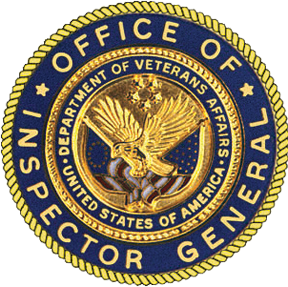Insufficient Mental Health Treatment and Access to Care for a Patient and Review of Administrative Actions in Veterans Integrated Service Network 10
Report Information
Summary
The Office of Inspector General (OIG) evaluated concerns related to Veterans Integrated Service Network (VISN) 10 staff’s care and treatment coordination for a patient who died. The OIG reviewed the sufficiency of Veterans Health Administration (VHA) leaders’ actions prior to and following notification of the patient’s death.
VA Ann Arbor Health Care System (Ann Arbor VA) staff adequately considered a posttraumatic stress disorder diagnosis and assessment for the patient and screened for toxic exposure and traumatic brain injury. However, inpatient mental health providers failed to sufficiently address the patient’s mental health condition, treatment needs, and discharge care coordination.
Due to absence of documentation, the OIG was unable to determine whether a Battle Creek VA Medical Center (Battle Creek VA) staff member inaccurately verified the patient’s treatment eligibility status. Battle Creek VA staff responded appropriately to non-VA staff’s inpatient mental health unit inquiries regarding the patient’s transfer request; however, the transfer was not considered due to unavailability of beds. Battle Creek VA leaders implemented recommendations from a workgroup to improve transfer coordination.
A Battle Creek VA residential treatment standard operating procedure was inconsistent with the VHA requirement to allow self-referral or non-VA agency referral.
VHA leaders responded within 24 hours when notified of the patient’s transfer request and took actions to identify the patient’s treatment needs and options. VISN 10 leaders established an Interagency Reconciliation Council (IRC); however, the IRC lacked defined objectives and processes to monitor outcome progress.
The OIG made one recommendation to the Ann Arbor VA Director to review the patient’s care; four recommendations to the Battle Creek VA Director regarding eligibility verification procedures, transfer coordination, and the residential treatment standard operating procedure; and one recommendation to the VISN 10 Director related to the IRC’s identification of clearly defined objectives and processes to monitor progress.
The Ann Arbor VA Medical Center Director conducts a full review of the patient’s spring to fall 2017 mental health care to identify quality of care improvement opportunities related to inpatient psychiatrist 2’s medical decision-making, staff’s pre-discharge outpatient care planning, and outpatient staff’s collaboration in providing treatment and engagement efforts including the mental health treatment coordinator assignment and role, and takes actions as warranted.
The Battle Creek VA Medical Center Director ensures staff awareness and access to eligibility verification procedures.
The Battle Creek VA Medical Center Director expedites the full implementation of the Transfer and Admission Coordination Office including a centralized phone number and monitors compliance with the standardized checklist.
The Battle Creek VA Medical Center Director expedites the completion and implementation of the interfacility transfers standard operating procedure and monitors compliance.
The Battle Creek VA Medical Center Director ensures the mental health residential rehabilitation treatment program standard operating procedure is aligned with Veterans Health Administration requirements regarding referral and monitors compliance.
The Veterans Integrated Service Network Director evaluates the efficacy of the Interagency Resolution Council and identification of clearly defined objectives and processes to monitor progress and address identified barriers.
